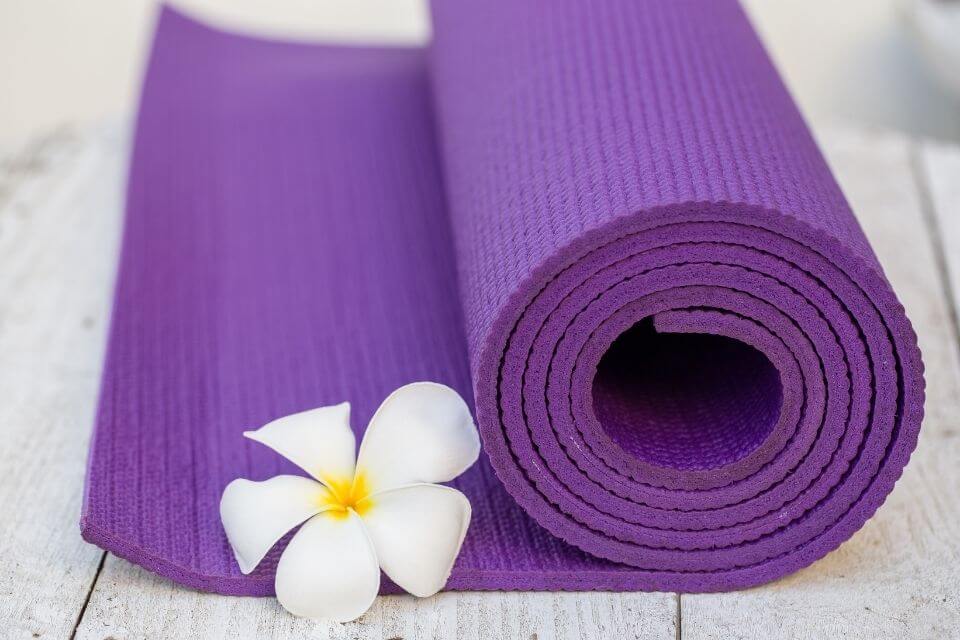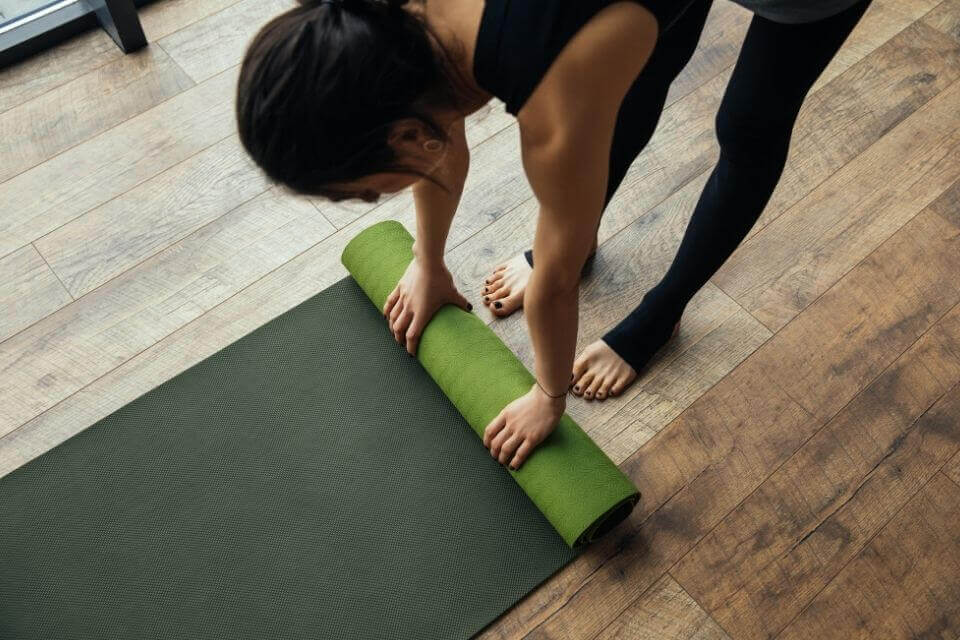Sometimes, when you bend down for your Adho Mukha Svanasana, do you always manage to keep your focus — or do your eyes catch a glimpse at your yoga mat and make you wonder, “Hmm…I wonder what is a yoga mat made of?”
Your yoga mat is an integral part of your practice. Without it, you won’t have a base to give you support, provide a foundation when you stand, hold you when your only source of strength is your core, and your feet or hands grasp the floor, all while being the recipient of your well-earned sweat.
This is why you shouldn’t take your yoga mat for granted. Several types of mats will suit your particular needs; you need to find out which the right one is for you. But let’s go back to our first question — what exactly are these mats made up of? And are they all the same in terms of durability and performance?

Breaking Down the Yoga Mat
An article from Azcentral.com lists down some of the known materials yoga mats are made of, and these include the following:
PVC
PVC or polyvinyl chloride is an anti-slip material that is helpful when trying to maintain a challenging pose. It helps your hands and feet keep their place on the floor and aid you in maintaining your foundation. However, the downside of the PVC material is how it is processed. Standard PVC foam cannot be produced without emitting carcinogenic byproducts and dioxins. On top of that, when the PVC yoga mat is used, it can also leach and off-gas dangerous additives such as a type of chemical called phthalates and lead and cadmium.
Non-PVC Yoga Mat Materials
Fortunately, there are also several eco-friendlier yoga mat options in the market. The following do not contain PVC and are a lot safer for the environment.
- Memory Foam – Not all companies offer PVC-free memory foam yoga mats, but you will be able to find some that do. Memory foam helps relieve pressure points that are strained from standing poses. With three layers of protection, you will be able to hold your pose steadily with the bottom layer on the ground, the middle layer with a comfortable memory foam material to support you, and a top layer that remains sticky and dry because it is texturized and water-resistant.
- Closed-Cell Rubber Foam – With a non-toxic material that contains recycled or sustainably harvested materials, this closed-cell rubber foam biodegrades easily after it is disposed of. Like PVC yoga mats, this earth-friendlier option prevents slipping care of its surface traction pattern. The pattern also helps maintain the stickiness of the mat, similar to the PVC’s. One downside, though, is if you are sensitive to latex. If this is the case, you can explore other eco-friendly mat options instead.
- Eco-PVC Foam – If your main concern is maximum traction, and you still want to make a conscious choice that won’t affect the environment, some manufacturers make an effort to reduce toxic emissions in the atmosphere during PVC foam production. Some of these manufacturers, like Manduka, follow strict EPA standards that make sure the pumps, valves, compressors, and connectors in their equipment do not leak VOCs (volatile organic compounds).

More Eco-Friendly Options
Your yoga mat isn’t limited to PVC. Based on this article from Bhsyoga.com, other yoga mat materials are friendly to the environment.
1. PU and Natural Rubber
The combination of PU and natural rubber makes a material with quite a strong grip, and many yogis have sworn by the impressive non-slip surface. Not only is the PU mat cost-effective, but it is also durable and won’t off-gas harsh chemicals because of its natural content.
2. TPE or Thermoplastic
Thermoplastic yoga mats are a mix of polymers (plastic and rubber) and copolymers that have thermoplastic and elastomeric properties. These materials can be recycled without causing damage to the environment after disposal. Another plus of the TPE mat is that it is easy to clean and is anti-microbial. Like most non-PVC materials, the TPE mat is non-toxic and has a non-irritating odor. It is one of the most popular alternatives to PVC mats because of its durability and environmental-friendliness.
3. NTE or Nitrile Butadiene Rubber
The content of NTE mats is butadiene and acrylonitrile through emulsion polymerization. While the NTE mat is oil and heat-resistant, and very elastic, it is not as cohesive as other natural materials.
4. Natural Rubber Yoga Mat
Made with natural rubber sourced from rubber trees, these mats come from a renewable resource are unlike those made with EVA or synthetic rubber. It is also anti-microbial and has a good, comfortable grip, making it ideal for yoga. It seems like the ideal choice, being both functional and friendly to the environment. However, the downside with the natural rubber mat is that it is more costly than the other mats, and it cannot be used by those allergic to latex.
5. Jute Mat
Another naturally sourced sustainable material is jute, a plant that takes only 45 months to achieve full maturity. The jute plant cleans the air by absorbing carbon dioxide, and its leaves condition the soil naturally. Jute linen or hemp yoga mats are made with a combination of jute linen and eco-PVC. Jute mats contain a non-toxic material called Polymer Environmental Resin (PER), which keeps you in place while using the mat. The jute fiber and PER combination have meshed in a process that does not emit phthalates, making the manufacturing safe for workers. Another plus is that the jute mat is anti-microbial, so it is ideal for excessively sweaty yoga sessions like Bikram.
Conclusion
The yoga mat is not just a simple prop used in your favorite yoga sessions if you think about it. If you adhere to yoga’s practices and beliefs, you will recognize that your energy also affects the world around you. This includes the items you utilize and their impact on the world. Being aware of the yoga mat you are using and choosing the ones that will be kind to the environment reflects your contribution to the world and everyone inhabiting it. So the next time you do that downward-facing dog pose, you’ll be able to breathe steadily, knowing you have less to worry about.
